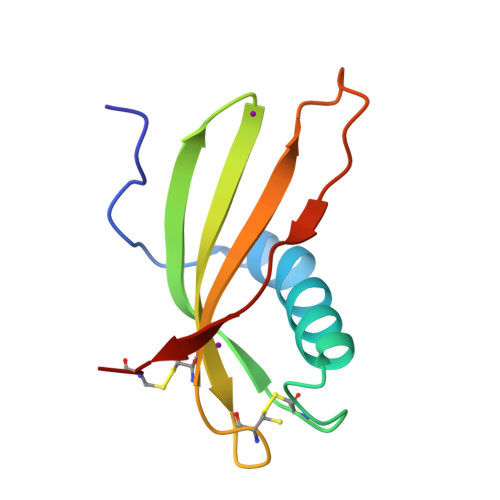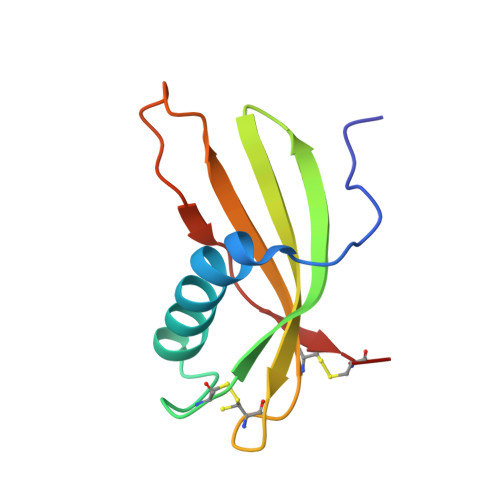An evolutionary molecular adaptation of an unusual stefin from the liver fluke Fasciola hepatica redefines the cystatin superfamily.
Busa, M., Matouskova, Z., Bartosova-Sojkova, P., Pachl, P., Rezacova, P., Eichenberger, R.M., Deplazes, P., Horn, M., Stefanic, S., Mares, M.(2023) J Biological Chem 299: 102970-102970
- PubMed: 36736427
- DOI: https://doi.org/10.1016/j.jbc.2023.102970
- Primary Citation of Related Structures:
6I1M - PubMed Abstract:
Fasciolosis is a worldwide parasitic disease of ruminants and an emerging human disease caused by the liver fluke Fasciola hepatica. The cystatin superfamily of cysteine protease inhibitors is composed of distinct families of intracellular stefins and secreted true cystatins. FhCyLS-2 from F. hepatica is an unusual member of the superfamily, where our sequence and 3D structure analyses in this study revealed that it combines characteristics of both families. The protein architecture demonstrates its relationship to stefins, but FhCyLS-2 also contains the secretion signal peptide and disulfide bridges typical of true cystatins. The secretion status was confirmed by detecting the presence of FhCyLS-2 in excretory/secretory products, supported by immunolocalization. Our high-resolution crystal structure of FhCyLS-2 showed a distinct disulfide bridging pattern and functional reactive center. We determined that FhCyLS-2 is a broad specificity inhibitor of cysteine cathepsins from both the host and F. hepatica, suggesting a dual role in the regulation of exogenous and endogenous proteolysis. Based on phylogenetic analysis that identified several FhCyLS-2 homologues in liver/intestinal foodborne flukes, we propose a new group within the cystatin superfamily called cystatin-like stefins.
Organizational Affiliation:
Institute of Organic Chemistry and Biochemistry, Czech Academy of Sciences, Prague, Czechia; Department of Biochemistry, Faculty of Science, Charles University, Prague, Czechia.

















